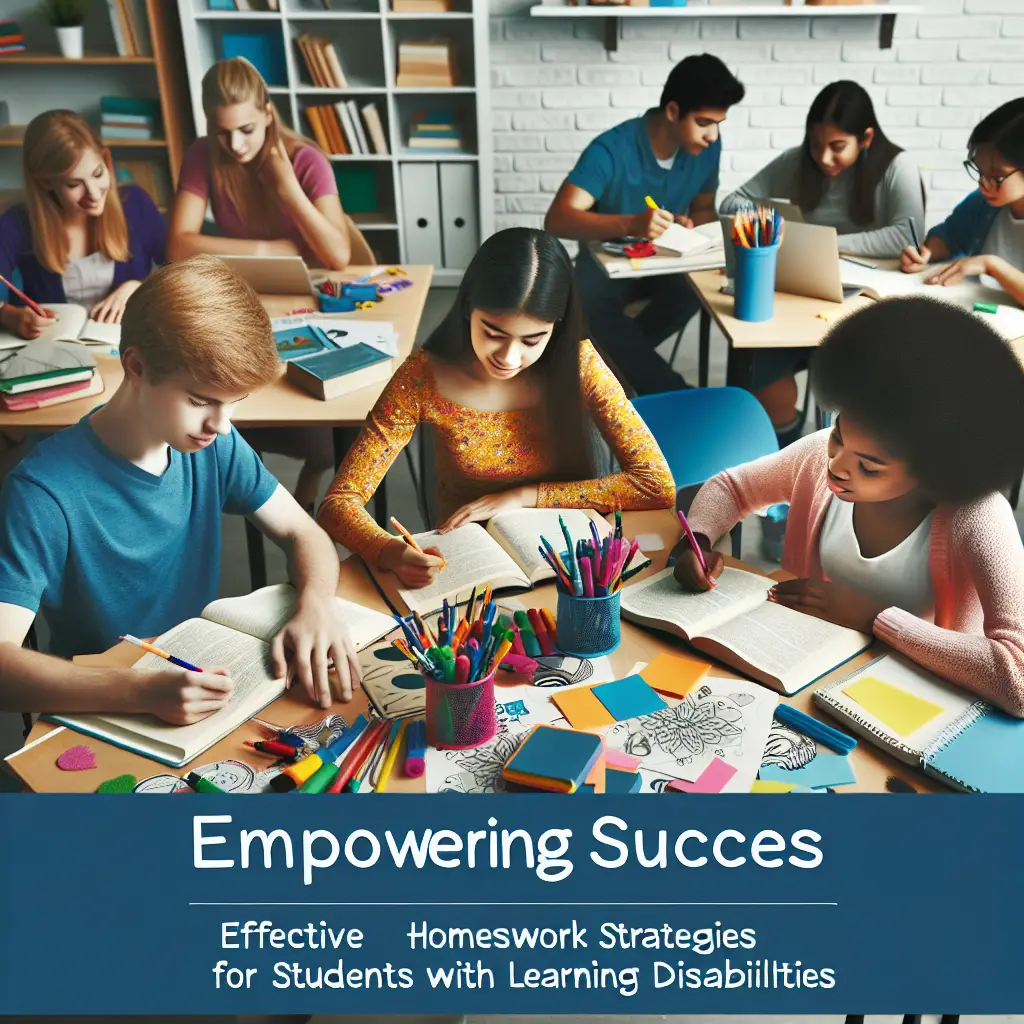
Empowering Success: Essential Homework Strategies for Students with Learning Disabilities
Introduction
Imagine a classroom where every student shines bright, where the struggles of understanding complex concepts fade away, and where each child can tackle homework with confidence and enthusiasm. For students with learning disabilities, this scenario may feel like a dream, yet with the right strategies focused on Empowering Success: Effective Homework Strategies for Students with Learning Disabilities, we can transform this vision into reality.
In this article, we delve into innovative and effective strategies tailored to assist students with learning disabilities in their homework routines. The journey to academic success requires a partnership between educators, parents, and students themselves. Our purpose is to provide insights, case studies, and actionable strategies that ensure every student can experience empowerment and success, regardless of their learning challenges.
Understanding the Challenge
The Landscape of Learning Disabilities
Learning disabilities affect millions of children, impacting their ability to learn, process information, and engage with academic tasks. Conditions such as dyslexia, ADHD, and auditory processing disorders can create significant barriers when it comes to homework.
Table 1: Common Learning Disabilities and Their Characteristics
| Learning Disability | Characteristics |
|---|---|
| Dyslexia | Difficulty with reading and writing |
| ADHD | Inattention, impulsivity, hyperactivity |
| Auditory Processing Disorder | Trouble processing auditory information |
| Dysgraphia | Challenges with handwriting and expression |
| Executive Function Disorder | Difficulty with organization and planning |
Understanding these challenges is the first step toward developing effective homework strategies. By recognizing the specific issues students face, we can create tailored approaches that empower success.
Effective Strategies for Homework Success
1. Creating a Structured Environment
One of the cornerstones of effective homework strategies for students with learning disabilities is establishing a structured environment. Spaces that are quiet, organized, and free from distractions play a crucial role in helping students focus.
Case Study: The Classroom Transformation
A fourth-grade teacher noticed that several of her students with learning disabilities struggled to complete homework in noisy environments. By rearranging the classroom to include quiet zones, she observed an improvement in concentration and productivity. Students could then experience the empowerment of completing assignments effectively.
2. Utilizing Assistive Technology
Advancements in technology have paved the way for powerful tools that can dramatically improve homework experiences. Assistive technology such as speech-to-text software, audio books, and specialized learning apps can bridge gaps for students with learning disabilities.
Table 2: Assistive Technologies for Homework Support
| Technology | Description |
|---|---|
| Speech-to-Text Software | Converts spoken words into written text |
| Audiobooks | Provides auditory access to texts |
| Educational Apps | Offers interactive and engaging learning resources |
By incorporating these technologies, we create an ecosystem supportive of Empowering Success: Effective Homework Strategies for Students with Learning Disabilities.
3. Breaking Down Assignments
Large homework assignments can be overwhelming, leaving students feeling anxious and disheartened. By breaking down tasks into smaller, manageable chunks, students can approach their work methodically.
Case Study: The Chunking Approach
A middle school student diagnosed with ADHD faced difficulty completing long-term projects. His parents and teachers collaborated to segment the project into smaller tasks with specific deadlines. This approach not only maintained his focus but also provided him with a sense of accomplishment with each completed segment.
4. Implementing Time Management Techniques
Teaching students time management skills is essential. Strategies such as using timers, planners, and visual schedules can help students stay on track and manage their homework efficiently.
Case Study: The Visual Timer
One high school teacher introduced a visual timer in her classroom. Students learned to estimate the time they would need for various tasks. This practice empowered them to take responsibility for their time, alleviating anxiety about homework deadlines and motivation.
5. Providing Clear Instructions and Support
Clarity is vital when it comes to homework. Providing written instructions alongside verbal explanations helps reinforce understanding. Utilizing graphic organizers can also aid in structuring thoughts and ideas.
Case Study: Visual Supports in Homework
A special education teacher used graphic organizers to assist her students in planning writing assignments. The visual aids helped students with dysgraphia to organize their ideas cohesively, ultimately enhancing their written work.
6. Encouraging a Growth Mindset
Fostering a growth mindset among students can lead to greater resilience and motivation. Encouraging them to see failures as opportunities for growth is critical for their academic journey.
Case Study: Celebrating Effort
A school implemented a program celebrating effort, not just results. Students were praised for persistence and determination, fostering an environment where mistakes became learning experiences, resulting in heightened confidence.
Conclusion
Empowering Success: Effective Homework Strategies for Students with Learning Disabilities is a journey filled with potential and promise. By implementing structured environments, leveraging technology, breaking tasks into smaller segments, teaching time management, providing clear instructions, and fostering a growth mindset, we can enhance the homework experience for students with learning disabilities.
As we move forward in the endeavor of supporting these students, let us remember that every small victory counts. We can foster an inclusive environment that not only recognizes challenges but celebrates the diverse paths to success.
FAQs Section
What are the best homework strategies for students with learning disabilities?
The best strategies include creating a structured environment, utilizing assistive technology, breaking assignments into manageable chunks, implementing time management techniques, and providing clear instructions.How can parents support their children with learning disabilities during homework?
Parents can create a conducive homework environment, offer help with organization, communicate with teachers, and encourage a positive attitude toward challenges.Is using technology essential for homework success?
While not essential, technology can significantly enhance learning experiences by providing tools and resources that address specific challenges faced by students with learning disabilities.What role does a growth mindset play in homework success?
A growth mindset encourages students to view challenges as opportunities for growth, fostering resilience and motivation. This mindset can help students persevere and overcome obstacles.- How can schools involve parents in homework strategies?
Schools can engage parents through workshops, communication about effective strategies, and involving them in developing strategies that can be reinforced at home.
In embracing these insights, we can truly Empower Success: Effective Homework Strategies for Students with Learning Disabilities, paving the way for brighter academic futures filled with achievements, confidence, and growth.






